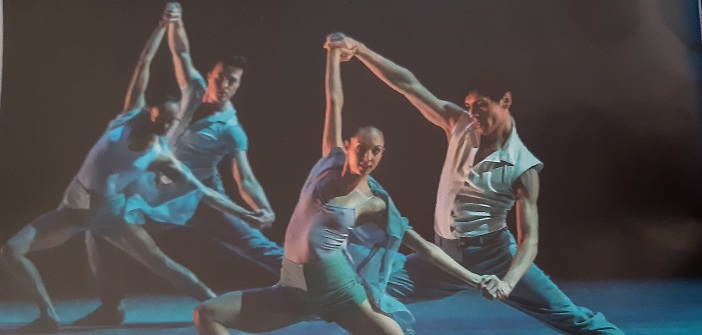For its reopening, the Nice Méditerranée ballet offered us three pieces as diverse as they were complementary.
The famous “Sylvia,” after Louis Mérante, draws on Greek mythology (a temple serves as the setting) to present us with an emancipated character, a huntress (doesn’t “sylva” mean forest in Latin?), who defies the gods to the point of shooting a few arrows at them. Aminta, a shepherd, is in love with her. The grace and harmony of the performers, surrounded notably by the huntresses, are all the more highlighted as the music by Léo Delibes fully supports the work. One might say the music is almost tailored for the movements, this dynamism, these choreographic twists: Sylvia is abducted and then freed. The introduction of leitmotifs through the brass instruments brings us back to the epic nature of this ballet. And yet, “Sylvia” marks a transition between the romantic ballet and its future, which is in line with Nice Méditerranée’s selection of pieces between classic and contemporary. Boldness, rigor, and many highly appreciated pas de deux.
Indeed, the second ballet is titled “Belong Pas de Deux,” signed by Norbert Vesak. A pair of dancers illustrates love, sharing, the union of bodies supported, swept away, transported. Certainly, the male dancer catches, and lifts the partner more, but it does not detract from the sense of fusion and trust created by the performers Alessio Passaquindici and Alba Cazorla. Through this ascending progression from the ground to elevation towards the horizon, the choreographer depicts an emerging love. The bodies spin, contour in elaborate, harmonious, benevolent curves. They seem caught up in their enthusiasm, alone in the world and yet admired, set to sometimes harsh music by Syrinx that allows them such a subtle progression.
Finally, “Océana,” created in 1991 for the Nice Méditerranée ballet by Lucinda Childs, offers a sort of mesmerizing melody in a fluid perpetual motion that grows and grows. One thinks of ocean waves in shades of blue. We are almost hypnotized by this occupation of the stage, this well-oiled mechanism, yet one that is forgotten as harmony marries the rigor and precision of the movements. The music by Osvaldo Golijov carries these dancers, and time seems to stretch into meditation. We are transported by this mystical atmosphere in communion with the elements, the ebb and flow of the bodies, the tides, the water. Breathtaking!
Roland Haugade


